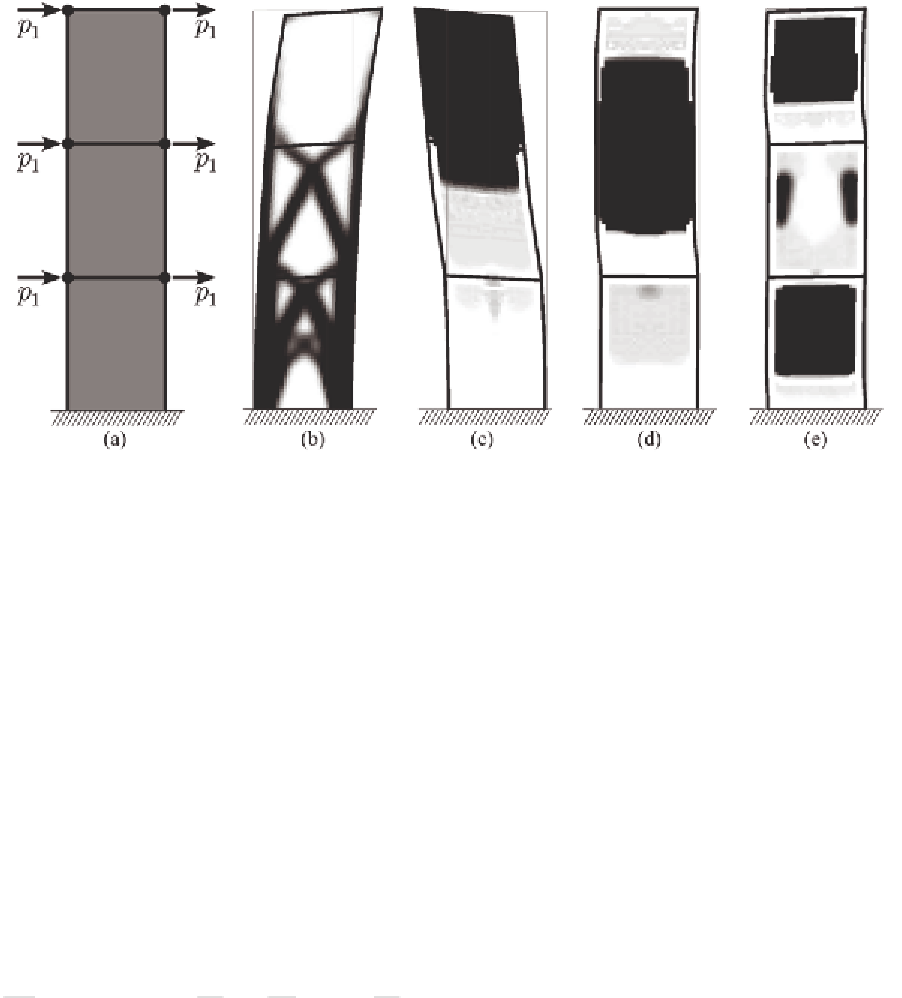Geology Reference
In-Depth Information
Figure 10. Minimizing the dynamic compliance of the frame of example 3 under periodic loading: ex-
ternal periodic loads (a), and deformed shape of final topologies for different input frequencies; Ω = 0
(static loading) (b), Ω = 60 rad/s (c), Ω = 175 rad/s (d), and Ω = 330 rad/s (e). The first four natural
frequencies of the initial structure are ω
1
= 40.2, ω
2
= 163, ω
3
= 215, and ω
4
= 326 (rad/s).
we consider the structure to be subjected to a
periodic load
p p
1
The previous example is considered under
the dynamic loads (
p
1
) in Figure 10a and the
static loads (
p
2
) shown in Figure 11a. The ratio
between the magnitude of the loads is
p
2
:
p
1
= 5.
Various optimal topologies resulted from using
various input frequencies of
p
1
are illustrated in
Figure 11b-e.
In a similar manner one can optimize the topol-
ogy of a structure under any combination of static
and periodic loads with different frequencies.
cos
Ω
and a static load
p
2
(with frequency of zero). The objective function
is considered as
=
t
C
1
c
m
=
T
+
T
2
(1.75)
p u
p u
C
C
2
1
1
where
(
)
K
Ω
2
M u
p
and
Ku
p
−
=
=
(1.76)
C
C
2
2
1
1
8. OTHER CONSIDERATIONS
Sensitivities of this objective function can be
calculated as
So far we have simplified the optimization prob-
lems by ignoring the damping effects and non-
linear material behavior. We have also limited
our study to small deformations. Considering
large deformations will lead to geometrically
non-linear problems.
∂
∂
c
x
∂
∂
K
∂
∂
M
u
∂
∂
K
u
T
T
2
T
m
= −
Tsign(
p u
)
u
−
Ω
−
u
C
C
C
C
2
2
x
x
x
1
1
1
1
(1.77)


Search WWH ::

Custom Search